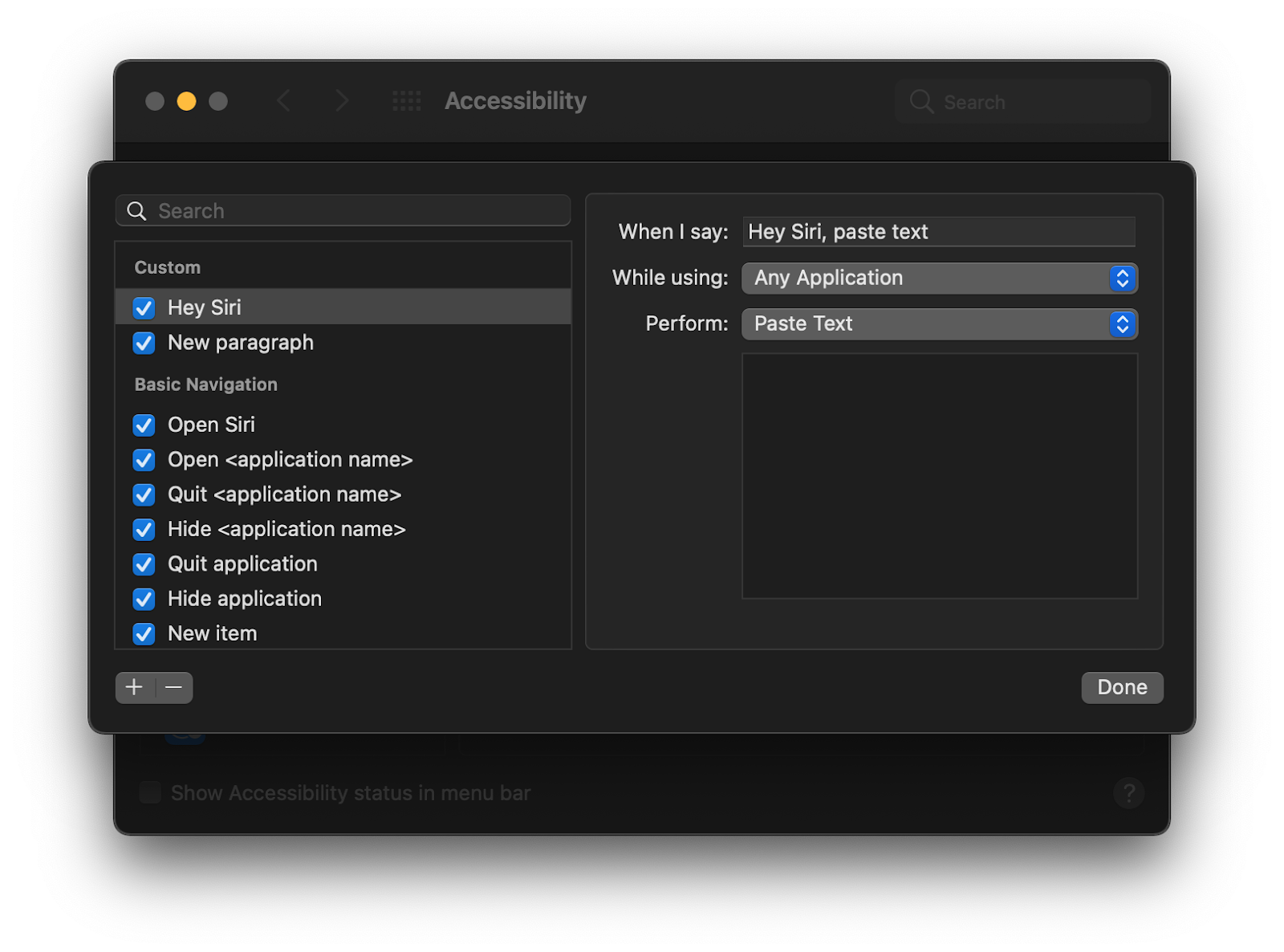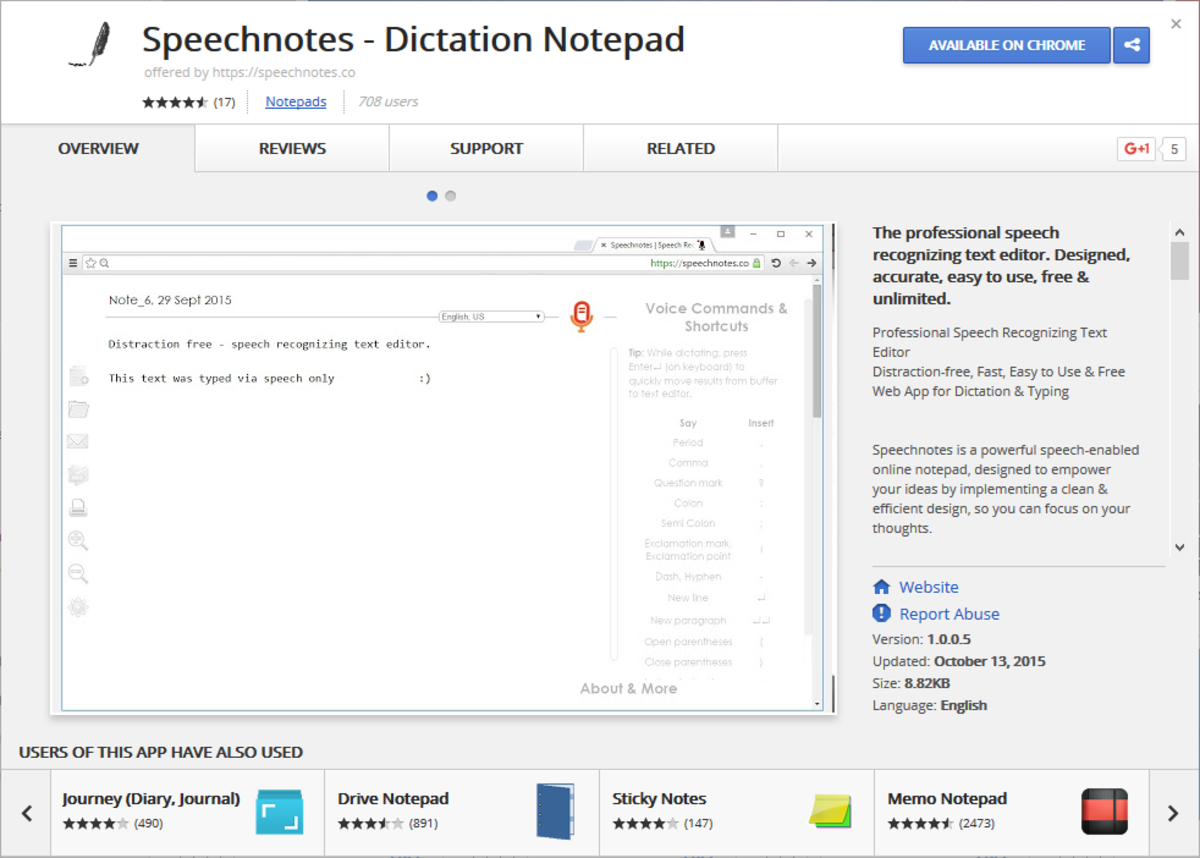macOS Catalina introduces Voice Control, a new way to fully control your Mac entirely with your voice. Voice Control uses the Siri speech-recognition engine to improve on the Enhanced Dictation feature available in earlier versions of macOS.1
If you've got an iPhone, iPad, or Mac, you're probably already familiar with Apple's personal assistant software app. In fact, you already have it free with your device. What most people don't realize is that Siri can also be used as a voice dictation app for shorter messages or emails.
- We will tell you about some awesome software for converting text to speech that are available online for free download. Ivona- supports cloud service for recording. Ivona is very powerful and continuously evolving software for text to speech conversion. It has gained popularity for working well on every device.
- Verdict: This speech to text software for Mac is a program that can help you deliver any kind of speech, whether it is a formal speech an informal speech or a joke. It take the form of a speech generator that would first need a sentence or a paragraph of the target language to be translated and then it would generate the proper text based on the grammar of that sentence.
- Sep 04, 2021 The price of the dragon voice recognition software starts from USD 300. #7 Deepgram (Free / Flexible) Deepgram is AI special speech-to-text software designed for Mac to convert different formats like mp3, mp4, AMR, etc., into the text file.
How to turn on Voice Control
After upgrading to macOS Catalina, follow these steps to turn on Voice Control:
- Choose Apple menu > System Preferences, then click Accessibility.
- Click Voice Control in the sidebar.
- Select Enable Voice Control. When you turn on Voice Control for the first time, your Mac completes a one-time download from Apple.2
Voice Control preferences
When Voice Control is enabled, you see an onscreen microphone representing the mic selected in Voice Control preferences.
To pause Voice Control and stop it from from listening, say ”Go to sleep” or click Sleep. To resume Voice Control, say or click ”Wake up.”

How to use Voice Control
Get to know Voice Control by reviewing the list of voice commands available to you: Say “Show commands” or ”Show me what I can say.” The list varies based on context, and you may discover variations not listed. To make it easier to know whether Voice Control heard your phrase as a command, you can select ”Play sound when command is recognized” in Voice Control preferences.
Basic navigation
Voice Control recognizes the names of many apps, labels, controls, and other onscreen items, so you can navigate by combining those names with certain commands. Here are some examples:
- Open Pages: ”Open Pages.” Then create a new document: ”Click New Document.” Then choose one of the letter templates: 'Click Letter. Click Classic Letter.” Then save your document: ”Save document.”
- Start a new message in Mail: ”Click New Message.” Then address it: ”John Appleseed.”
- Turn on Dark Mode: ”Open System Preferences. Click General. Click Dark.” Then quit System Preferences: ”Quit System Preferences” or ”Close window.”
- Restart your Mac: ”Click Apple menu. Click Restart” (or use the number overlay and say ”Click 8”).
You can also create your own voice commands.

Number overlays
Use number overlays to quickly interact with parts of the screen that Voice Control recognizes as clickable, such as menus, checkboxes, and buttons. To turn on number overlays, say ”Show numbers.” Then just say a number to click it.
Number overlays make it easy to interact with complex interfaces, such as web pages. For example, in your web browser you could say ”Search for Apple stores near me.” Then use the number overlay to choose one of the results: ”Show numbers. Click 64.” (If the name of the link is unique, you might also be able to click it without overlays by saying ”Click” and the name of the link.)
Voice Control automatically shows numbers in menus and wherever you need to distinguish between items that have the same name.
Free Voice To Text Converter
Grid overlays
Use grid overlays to interact with parts of the screen that don't have a control, or that Voice Control doesn't recognize as clickable.
Say “Show grid” to show a numbered grid on your screen, or ”Show window grid” to limit the grid to the active window. Say a grid number to subdivide that area of the grid, and repeat as needed to continue refining your selection.
To click the item behind a grid number, say ”Click” and the number. Or say ”Zoom” and the number to zoom in on that area of the grid, then automatically hide the grid. You can also use grid numbers to drag a selected item from one area of the grid to another: ”Drag 3 to 14.”
To hide grid numbers, say ”Hide numbers.” To hide both numbers and grid, say ”Hide grid.”
Dictation
When the cursor is in a document, email message, text message, or other text field, you can dictate continuously. Dictation converts your spoken words into text.
- To enter a punctuation mark, symbol, or emoji, just speak its name, such as ”question mark” or ”percent sign” or ”happy emoji.” These may vary by language or dialect.
- To move around and select text, you can use commands like ”Move up two sentences” or ”Move forward one paragraph” or ”Select previous word” or ”Select next paragraph.”
- To format text, try ”Bold that” or ”Capitalize that,” for example. Say ”numeral” to format your next phrase as a number.
- To delete text, you can choose from many delete commands. For example, say “delete that” and Voice Control knows to delete what you just typed. Or say ”Delete all” to delete everything and start over.
Voice Control understands contextual cues, so you can seamlessly transition between text dictation and commands. For example, to dictate and then send a birthday greeting in Messages, you could say ”Happy Birthday. Click Send.” Or to replace a phrase, say ”Replace I’m almost there with I just arrived.”

You can also create your own vocabulary for use with dictation.
Create your own voice commands and vocabulary


Create your own voice commands
- Open Voice Control preferences, such as by saying ”Open Voice Control preferences.”
- Click Commands or say ”Click Commands.” The complete list of all commands opens.
- To add a new command, click the add button (+) or say ”Click add.” Then configure these options to define the command:
- When I say: Enter the word or phrase that you want to be able to speak to perform the action.
- While using: Choose whether your Mac performs the action only when you're using a particular app.
- Perform: Choose the action to perform. You can open a Finder item, open a URL, paste text, paste data from the clipboard, press a keyboard shortcut, select a menu item, or run an Automator workflow.
- Use the checkboxes to turn commands on or off. You can also select a command to find out whether other phrases work with that command. For example, “Undo that” works with several phrases, including “Undo this” and “Scratch that.”
To quickly add a new command, you can say ”Make this speakable.” Voice Control will help you configure the new command based on the context. For example, if you speak this command while a menu item is selected, Voice Control helps you make a command for choosing that menu item.
Create your own dictation vocabulary
- Open Voice Control preferences, such as by saying ”Open Voice Control preferences.”
- Click Vocabulary, or say ”Click Vocabulary.”
- Click the add button (+) or say ”Click add.”
- Type a new word or phrase as you want it to be entered when spoken.
Learn more
- For the best performance when using Voice Control with a Mac notebook computer and an external display, keep your notebook lid open or use an external microphone.
- All audio processing for Voice Control happens on your device, so your personal data is always kept private.
- Use Voice Control on your iPhone or iPod touch.
- Learn more about accessibility features in Apple products.
What Is The Best Free Dictation Software
1. Voice Control uses the Siri speech-recognition engine for U.S. English only. Other languages and dialects use the speech-recognition engine previously available with Enhanced Dictation.
2. If you're on a business or school network that uses a proxy server, Voice Control might not be able to download. Have your network administrator refer to the network ports used by Apple software products.
Text to speech software has become a common choice for many to read web contents, eBooks, PDF files, clipboard contents etc. It is very helpful for people suffering from dyslexia, students pursuing eLearning and even content editors who have to read a large amount of content on computers daily.
Related:
We will tell you about some awesome software for converting text to speech that are available online for free download.
1. Ivona- supports cloud service for recording
Ivona is very powerful and continuously evolving software for text to speech conversion. It has gained popularity for working well on every device.
Key features:
- Offers technical support during implementation process
- Good voice quality and accuracy in reading texts
- Available in many languages
- 51 kinds of voices are available
2. Natural Reader- compatible with PDF, word and webpage
Natural Reader can read any text for you, including webpage, PDF, word files, emails and various other sources.
Key features:
- Available for Windows and Mac operating systems
- Supports mp3 or wav files
- Offers syncing of multiple devices
- Over 11 languages and 50 voices
3. eSpeak- compact and open source
Free Speech To Text Software For Mac
eSpeak is very useful software for text to speech conversion that can perfectly enunciate anything you type.
Key features:
- Can read out very complicated words
- Recognizes punctuations and advanced sentence structures
- Supports four different language styles
- Lightweight, size:2.28MB
4. Balabolka- easy to set voice parameters
It is a very potent software for text to speech conversion that supports saving of on-screen texts in various formats such as WAV, MP3, MP4 etc.
Key features:
- Control reading from system tray
- Can read text from AZW, AZW3, CHM, RTF files etc.
- Customizable font and background
- Supports over 25 languages
5. Panopreter- intuitive and easy to use GUI
Panopreter is free software that can read texts aloud form RTF, HTML, Document, web pages and many other sources.
Key features:
- Easily configurable speed of voice
- Can save text in WAV and MP3 formats
- Wide variety of language and speech supported
- Supported by Windows OS
6. DSpeech- has automatic speech recognition function
DSpeech is free software for text to speech conversion that supports automatic speech recognition functionality among various other exciting features.
Key features:
- Allows saving texts in WAV, MP3, WMA formats
- Supports dynamic voice change features
- Can dub movie subtitles
- Supports English, Spanish, French and many other languages
7. iSpeech- translate speaking text easily
iSpeech is a multilingual text to speech converting software available for free.
Key features:
- High quality speech audio
- Can save texts in multiple formats like MP3, WAV, MP4 etc.
- Can translate speaking text in 7 languages
- Can read translated text in 18 languages
Free Voice To Text Online
8. read aloud software
9. Panopreter Basic
10. Speakonia
This list contains information depending on key features and free versions provided by the text to speech software, based on current available information. We hope that you find this list useful while searching for text to speech software best suited for your need.